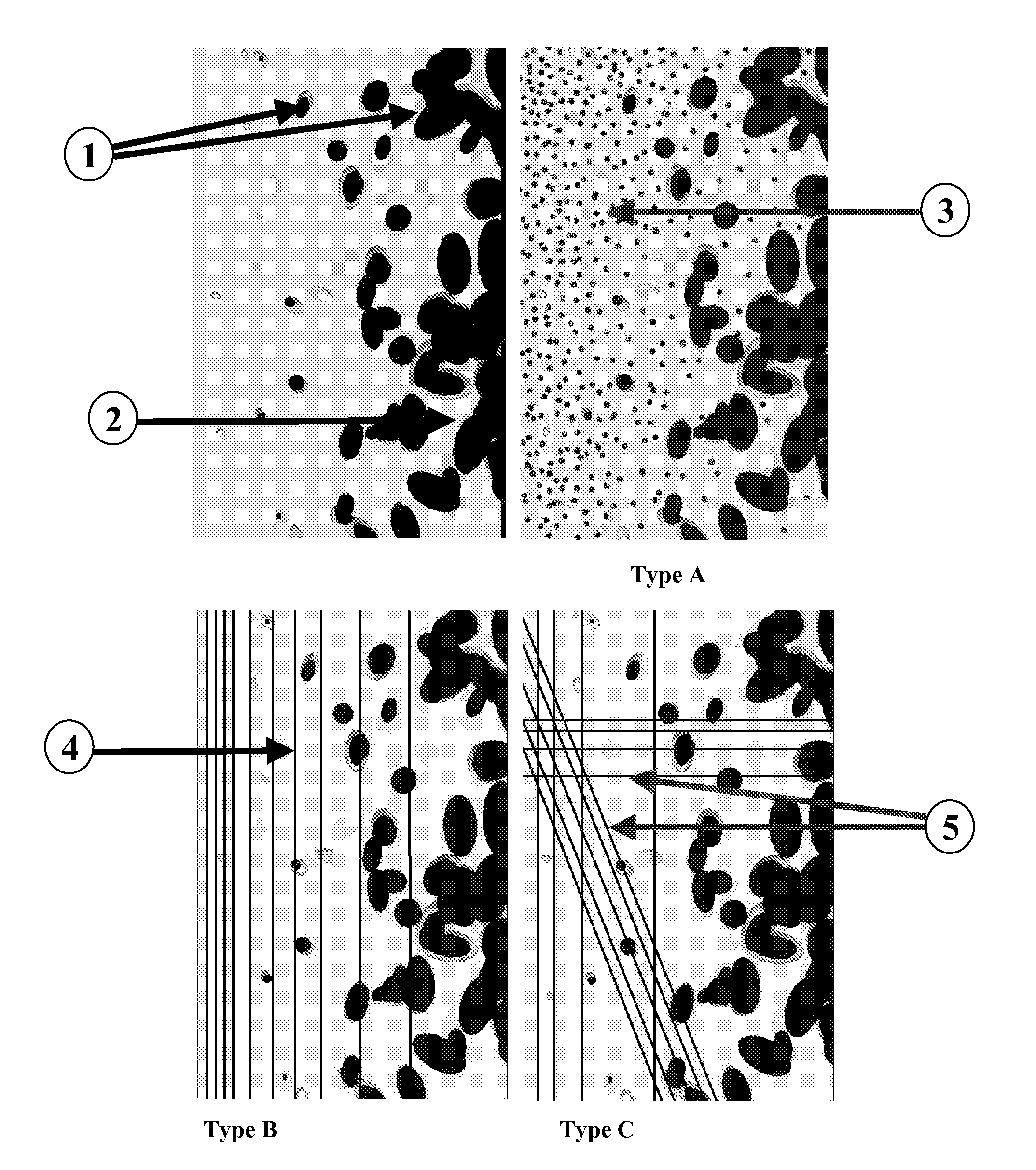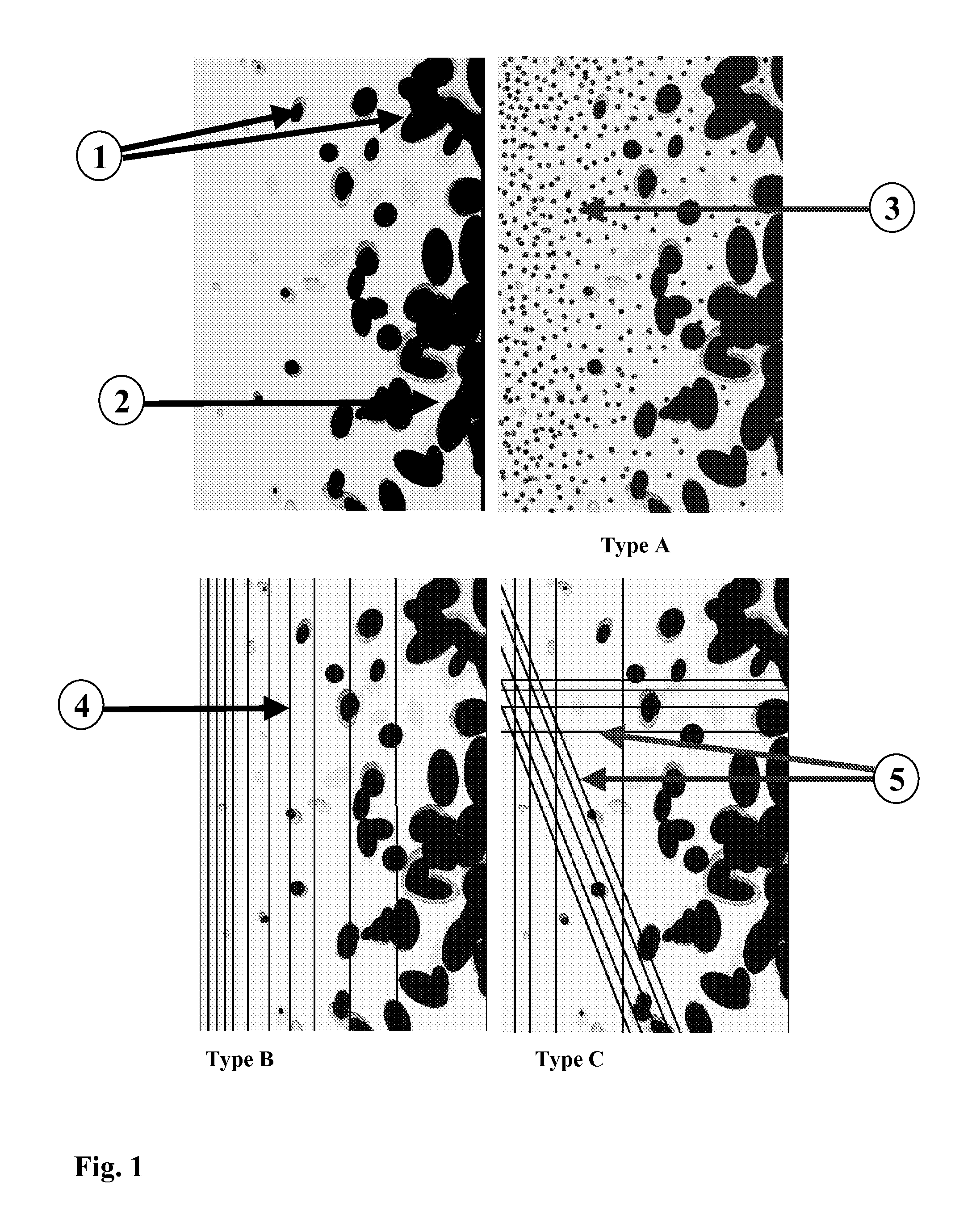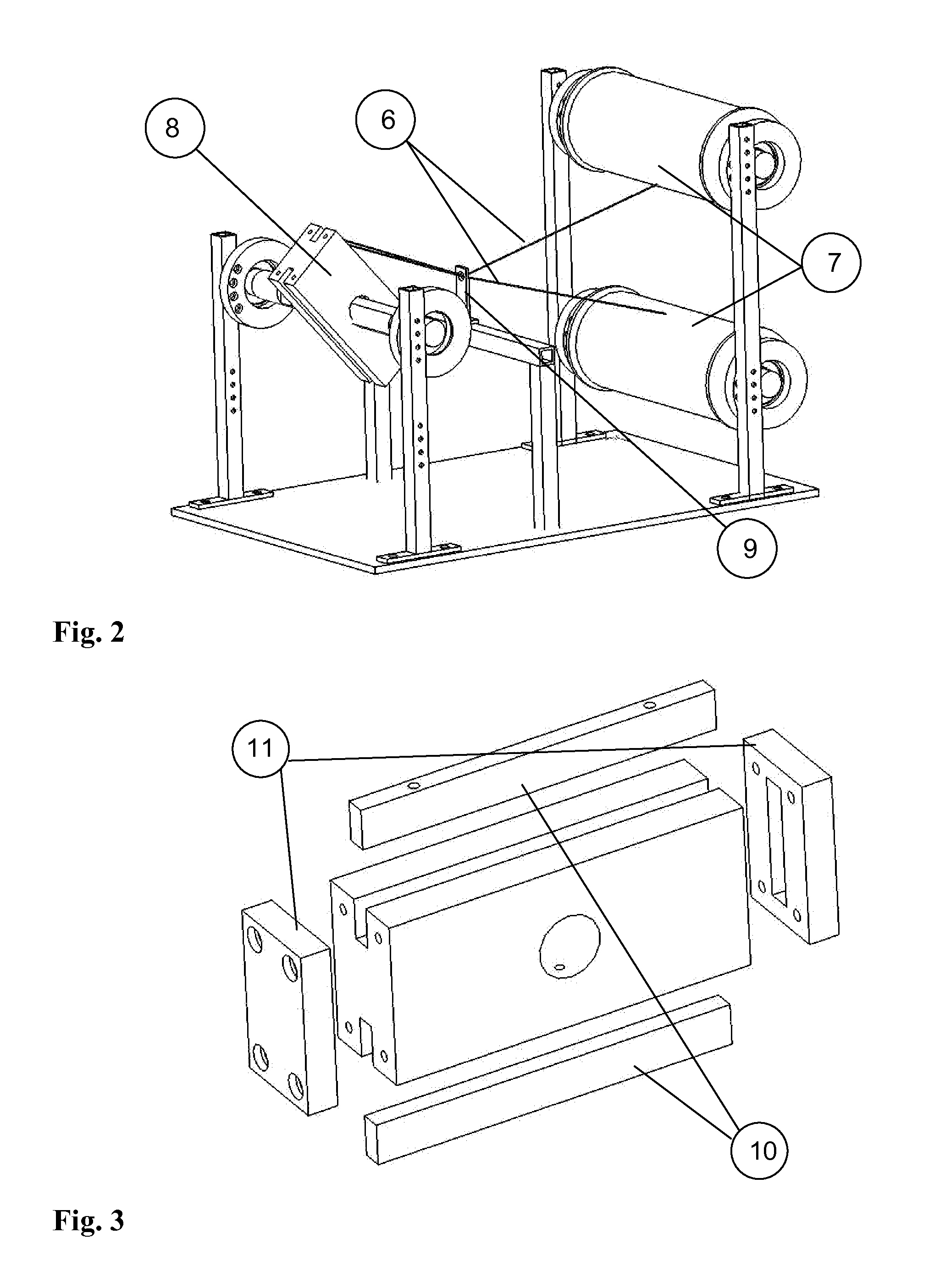Cellular gradient polymer composites
a gradient composite and polymer technology, applied in the field of cellular composite products, can solve the problems of reduced stiffness and early failure, limited design of polymer-based gradient composites, and high stress concentration, and achieve the effects of improving mechanical modulus and strength of porous composites, and controlling cellular structur
- Summary
- Abstract
- Description
- Claims
- Application Information
AI Technical Summary
Benefits of technology
Problems solved by technology
Method used
Image
Examples
example 1
A Composite Product Combining Gradients of Fillers and of Porosity
Type A
[0071]The objective of this example is to illustrate how to obtain a composite porous structure of type A (FIG. 1).
[0072]First 5 g of PLA+5% β-TCP (PLA-5TCP), and 5 g of PLA+10% β-TCP (PLA-10TCP) are extruded under an inert atmosphere, using a micro-extruder (Micro5, DSM; the Netherlands). The following parameters are used: screw rotation speed 100 rpm, residence time 4 min and set temperature 200° C. Extruded compounds are then dried and cut into 1 cm long rods. Into a 50 mm diameter cylinder mould, a paper cylinder of 35 mm diameter is placed inside. Inside this cylinder, the 5 g of PLA-5TCP are placed, and on the outside the 5 g of PLA-10TCP are added. The paper cylinder is then removed, leading to a gradient of β-TCP concentration in the composite.
[0073]In a second step, foaming is carried out. The mould prepared as previously described is put into the autoclave. After tightly closing, pressure is increased ...
example 2
Composite Product Combining Gradients of Fibres and of Porosity
Type B
[0074]Processing steps and microstructure of type B composites with fibre volume gradients is described. The winding set-up is used to place polyamide (PA12) fibre bundles here with 32 monofilaments and carbon fibres (CF), in this case bundles of 250 monofilaments, around the mould (8) (FIGS. 2 and 3). The fibre volume fraction of carbon fibres at the external sides of the beam is 15%. FIG. 6 depicts the processing parameters used for the preconsolidation and final consolidation when the thermoplastic material is processed at 200° C. For example, FIG. 7 depicts the section of a Polyamide 12 (PA12) / carbon fibre (CF) composite having a fibre-free centre (16) surrounded by a fibre-rich region (4). The FIG. 7 shows also that the relative position between fibre bundles could be maintained during the solidification steps. In horizontal and vertical directions, a bundle placement precision of less than 500 μm and 200 μm r...
example 3
Composite Structure Combining Gradients of Fibres and of Porosity
Type B and C
[0076]The main challenge is here to combine fibre volume and porosity gradients, and more specifically, to preserve the initial fibre volume gradient when applying the gas foaming process to the system. The final fibre-reinforced foams have porosities ranging from 0% or more up to 90%.
[0077]The example is based on a bioresorbable polymer, Poly(L-lactic acid) (PLA) reinforced with glass fibres, but the method is not restricted to this material system.
[0078]Continuous conventional E glass fibres are winded progressively around the holder (FIG. 4) to form several layers with different fibres volumes and to keep fibres stable and oriented during foaming. The holder is then put into a cylindrical mould for the pressurised chamber, and the PLA pellets (15 g) are added to the fibres. PLA pellets can be replaced or combined with PLA fibres winded with the glass fibres to form commingled yarns. Gas foaming is then c...
PUM
| Property | Measurement | Unit |
|---|---|---|
| Fraction | aaaaa | aaaaa |
| Fraction | aaaaa | aaaaa |
| Fraction | aaaaa | aaaaa |
Abstract
Description
Claims
Application Information
 Login to View More
Login to View More - R&D Engineer
- R&D Manager
- IP Professional
- Industry Leading Data Capabilities
- Powerful AI technology
- Patent DNA Extraction
Browse by: Latest US Patents, China's latest patents, Technical Efficacy Thesaurus, Application Domain, Technology Topic, Popular Technical Reports.
© 2024 PatSnap. All rights reserved.Legal|Privacy policy|Modern Slavery Act Transparency Statement|Sitemap|About US| Contact US: help@patsnap.com










